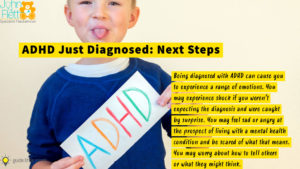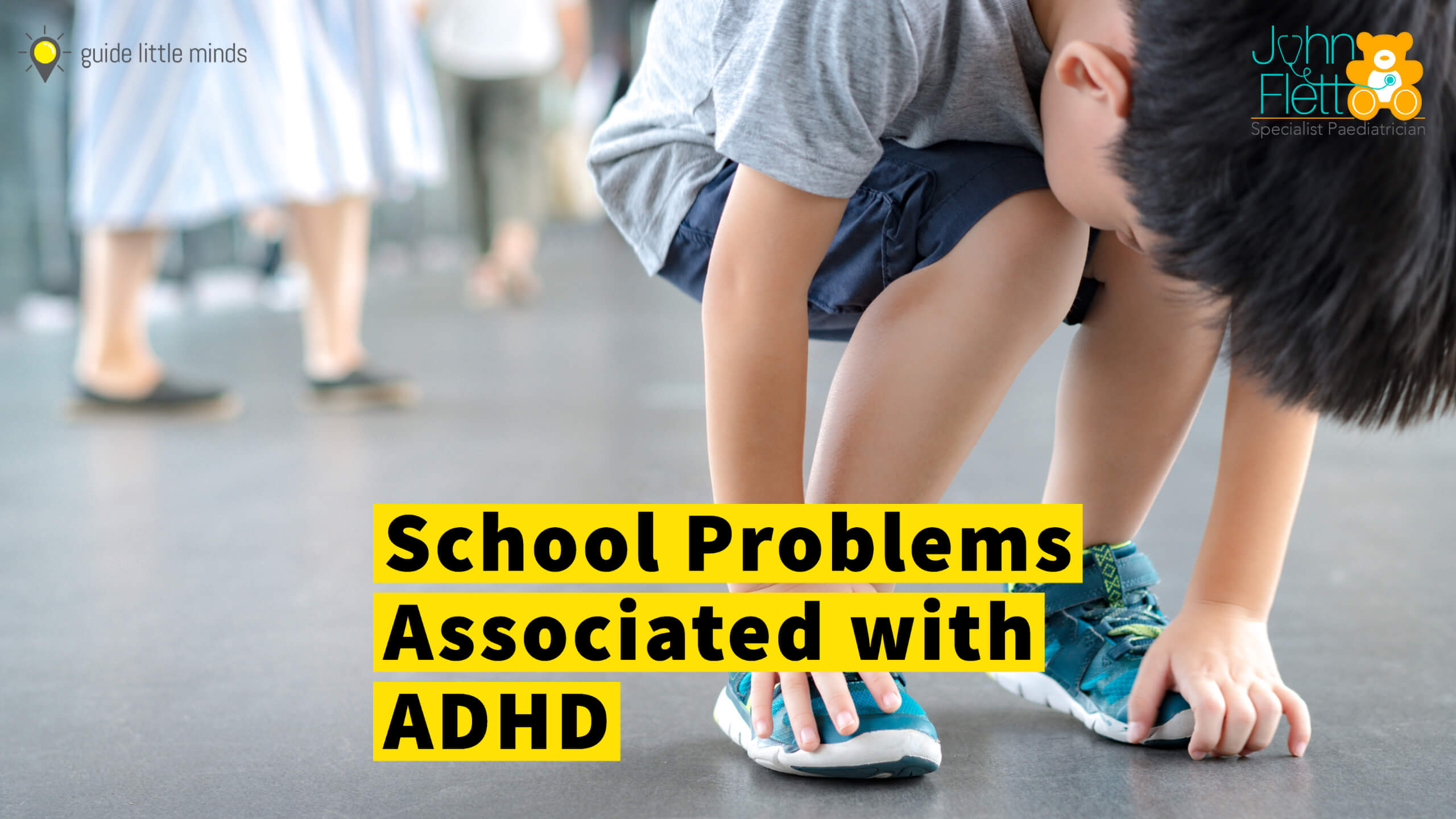ADHD and School
School can be a challenge for students with attention deficit hyperactivity disorder—but here’s how you can help your child or teen succeed in the classroom.
Setting up your child for school success.
The classroom environment can pose challenges for a child with attention deficit hyperactivity disorder (ADHD or ADD). The very tasks these students find the most difficult—sitting still, listening quietly, concentrating—are the ones they are required to do all day long. Perhaps most frustrating of all is that most of these children want to be able to learn and behave like their unaffected peers. Neurological deficits, not unwillingness, keep kids with attention deficit disorder from learning in traditional ways.
As a parent, you can help your child cope with these deficits and overcome the challenges school creates. You can work with your child to implement practical strategies for learning both inside and out of the classroom and communicate with teachers about how your child learns best. The following strategies can help your child enjoy learning, meet educational challenges, and experience success at school and beyond with consistent support.
Tips for working with teachers
Remember that your child’s teacher has a full plate: in addition to managing a group of children with distinct personalities and learning styles, they can also expect to have at least one student with ADHD. Teachers may try their best to help your child with attention deficit disorder learn effectively, but parental involvement can dramatically improve your child’s education. You have the power to optimize your child’s chances for success by supporting the steps taken in the classroom. If you can work with and support your child’s teacher, you can directly affect your child’s experience with ADHD at school.
There are several ways you can work with teachers to keep your child on track at school. Together you can help your child learn to find their feet in the classroom and work effectively through the challenges of the school day. As a parent, you are your child’s advocate. For your child to succeed in the classroom, you must communicate their needs to the adults at school. It is equally essential for you to listen to what the teachers and other school officials say.
You can ensure that communication with your child’s school is constructive and productive. Try to keep in mind that your mutual purpose is finding out how to help best your child succeed in school. Whether you talk over the phone, email, or meet in person, make an effort to be calm, specific, and positive—a good attitude can go a long way when communicating with the school.
Plan ahead. You can arrange to speak with school officials or teachers before the school year begins. If the year has started, plan to speak with a teacher or counsellor on at least a monthly basis.
Make meetings happen. Agree on a time that works for you and your child’s teacher and stick to it. If it’s convenient, meet in your child’s classroom so you can get a sense of their physical learning environment.
Create goals together. Discuss your hopes for your child’s school success. Together, write down specific and realistic goals and talk about how to help your child reach them.
Listen carefully. Like you, your child’s teacher wants to see them succeed at school. Listen to what they have to say—even if it is sometimes hard to hear. Understanding your child’s challenges in school is the key to finding solutions that work.
Share information. You know your child’s history, and your child’s teacher sees them every day: together, you have a lot of information that can better understand your child’s hardships. Share your observations freely, and encourage your child’s teachers to do the same.
Ask the hard questions and give a complete picture. Be sure to list any medications your child takes and explain any other treatments. Share with the teacher which tactics work well and don’t for your child at home. Ask if your child has any problems in school, including on the playground. Find out if they are eligible for any special services to help with learning.
Developing and using a behaviour plan
Children with ADD/ADHD can appropriate classroom behaviour, but they need structure and clear expectations to keep their symptoms in check. As a parent, you can help by developing a behaviour plan for your child—and sticking to it. Whatever type of behaviour plan you decide to implement, create it in close collaboration with your child and teacher.
Kids with attention deficit disorder respond best to specific goals and daily positive reinforcement and worthwhile rewards. Yes, you may have to hang a carrot on a stick to motivate your child to behave better in class. Create a plan that incorporates small rewards for small victories and more significant rewards for more considerable accomplishments.
Tips for managing ADHD symptoms at school
ADHD impacts each child’s brain differently so each case can look quite different in the classroom. Children with ADHD exhibit various symptoms: some seem to bounce off the walls, some daydream constantly, and others can’t follow the rules.
As a parent, you can help your child reduce any or all of these types of behaviours. It is essential to understand how attention deficit disorder affects different children’s behaviour so that you can choose the appropriate strategies for tackling the problem. There are a variety of pretty straightforward approaches you and your child’s teacher can take to best manage the symptoms of ADHD—and put your child on the road to school success.
Managing distractibility
Students with ADHD may become so easily distracted by noises, passersby, or thoughts that they often miss vital classroom information. These children have trouble staying focused on tasks that require sustained mental effort. They may seem as if they’re listening to you, but something gets in the way of their ability to retain the information.
Helping kids who distract easily involves physical placement, increased movement, and breaking long work stretches into shorter chunks.
- Seat the child with ADHD away from doors and windows. Put pets in another room or a corner while the student is working.
- Alternate seated activities with those that allow the child to move their body around the room. Whenever possible, incorporate physical movement into lessons.
- Write important information down where the child can easily read and reference it. Remind the student where the information is located.
- Divide significant assignments into smaller ones, and allow children frequent breaks.
Reducing interrupting
Kids with attention deficit disorder may struggle with controlling their impulses, so they often speak out of turn. In the classroom or at home, they call out or comment while others speak. Their outbursts may come across as aggressive or even rude, creating social problems. The self-esteem of children with ADHD is often quite fragile, so pointing this issue out in class or front of family members doesn’t help the problem—and may even make matters worse.
Correcting the interruptions of children with ADHD should be done carefully so that the child’s self-esteem is maintained, especially in front of others. Develop a “secret language” with the child with ADHD. You can use discreet gestures or words you have previously agreed upon to let the child know they are interrupting. Praise the child for interruption-free conversations.
Managing impulsivity
Children with ADHD may act before thinking, creating difficult social situations in addition to problems in the classroom. Kids who have trouble with impulse control may be aggressive or unruly. This is perhaps the most disruptive symptom of ADHD, particularly at school.
Methods for managing impulsivity include behaviour plans, immediate discipline for infractions, and a plan for giving children with ADHD a sense of control over their day.
Make sure a written behaviour plan is near the student. You can even tape it to the wall or the child’s desk.
Give consequences immediately following misbehaviour. Be specific in your explanation, ensuring the child knows how they misbehaved.
Recognize good behaviour out loud. Be specific in your praise, ensuring the child knows what they did right.
Write the schedule for the day on the board or a piece of paper and cross off each item as it is completed. Children with impulse problems may gain a sense of control and feel calmer when they know what to expect.
Managing fidgeting and hyperactivity
Students with ADHD are often in constant physical motion. It may seem like a struggle for these children to stay in their seats. Kids with ADD/ADHD may jump, kick, twist, fidget and otherwise move in ways that make them difficult to teach.
Strategies for combating hyperactivity consist of creative ways to allow the child with ADHD to move in appropriate ways at appropriate times. Releasing energy this way may make it easier for the child to keep their body calmer during work time.
Ask children with ADHD to run an errand or complete a task for you, even if it means walking across the room to sharpen pencils or put dishes away.
Encourage a child with ADHD to play a sport—or run around before and after school—and make sure the child never misses recess or P.E.
Provide a stress ball, small toy, or another object for the child to squeeze or play with discreetly at their seat.
Limit screen time in favour of time for movement.
Dealing with trouble following directions
Difficulty following directions is a hallmark problem for many children with ADHD. These kids may look like they understand and might even write down directions but then aren’t able to follow them as asked. Sometimes, these students miss steps, turn in incomplete work, misunderstand an assignment altogether, and wind up doing something else entirely.
Helping children with ADHD follow directions means taking measures to break down and reinforce the steps involved in your instructions and redirecting when necessary. Try keeping your instructions extremely brief, allowing the child to complete one step and then come back to find out what they should do next. If the child gets off track, give a calm reminder, redirecting in a calm but firm voice. Write directions down in a bold marker or coloured chalk on a blackboard.
Tips for making learning fun
One positive way to keep a child’s attention focused on learning is to make the process fun. Using physical motion in a lesson, connecting dry facts to interesting trivia, or inventing silly songs that make details easier to remember can help your child enjoy learning and even reduce the symptoms of ADHD.
Helping children with ADHD enjoy math
Attention deficit disorder children tend to think in a “concrete” manner. They often like to hold, touch, or participate in an experience to learn something new. Using games and objects to demonstrate mathematical concepts can show your child that math can be meaningful and fun.
Play games. Use memory cards, dice, or dominoes to make numbers fun. Or use your fingers and toes, tucking them in or wiggling them when adding or subtracting.
Draw pictures. Especially for word problems, illustrations can help kids better understand mathematical concepts. If the word problem says there are twelve cars, help your child draw them from the steering wheel to the trunk.
Invent silly acronyms. For example, to remember the order of operations, make up a song or phrase that uses the first letter of each operation in the correct order.
Helping children with ADHD enjoy reading.
There are many ways to make reading exciting, even if the skill itself tends to pose a struggle for children with ADHD. Keep in mind that reading at its most basic level involves stories and exciting information—which all children enjoy.
Read to children. Make reading cosy, quality time with you.
Make predictions or “bets.” Constantly ask the child what they think might happen next. Model prediction: “The girl in the story seems pretty brave—I bet she’s going to try to save her family.”
Act out the story. Let the child choose their character and assign you one, too. Use funny voices and costumes to bring it to life.






Responses